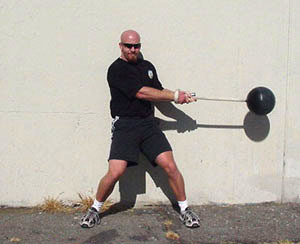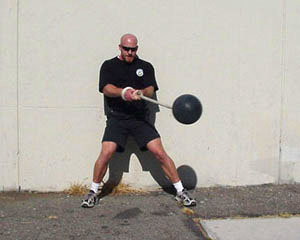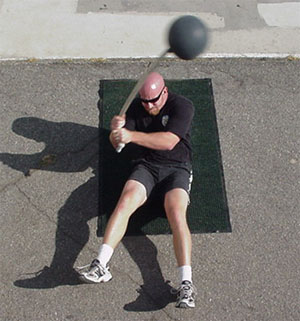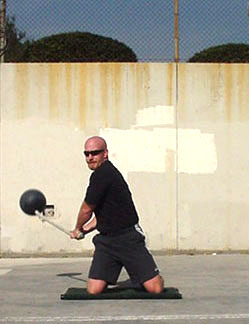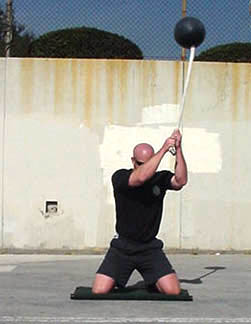- Nov 1, 2008
- 2,591
- 3,229
- AFL Club
- Port Adelaide
- Other Teams
- Dallas Cowboys/New York Yankees
Re: From Krakouer to a stick of dynamite
That is why getting the right fitness coach is so crucial. Someone reported that they saw Dom running at Flinders doing a jog interspersed 200 meter runs. He was also wearing a heart rate monitor. I was happy to hear that. A Footballer needs endurance but should not stimulate his slow twitch muscle fibres too much, hence the short bursts of 100 - 200 meters, prbably at a 90% intensity. This also stops the running program from cannabilizing the weights program which should be about Hypetrophy (muscle bulding). It depends wether the athlete at this stage needs to do rehab and muscle balancing before he bulks up or a bit of both. Furthermore, the speed of movement while a person lifts makes a difference. Athletes while they bulk up perform a repetition range of 8-12 with a 1-1 and a half minute rest period to stay in the Hypertrophy zone, they try and move the weight as fast as possible even if it is not moving slow. Again, this is to make sure that you don't slow down while you are trying to bulk up. When the athlete has gained some size they try and get the athlete to increase the weight and do repetition ranges of 4-6 which is the strength training zone. The rest period here is longer, 2-3 minutes, and the idea is to make a stronger athlete. The strenght is later turned power and agility which is another type of training. In this time period the athlete is changing his running program from an endurance based program to a more intense type of conditioning that is starting to address some of the more specific energy systems in footy. Getting the mix right is why some teams are fitter than others, bearing in mind that they have to mange this program so that their athletes peak when they want them to. The fitness coaches have to plan the program month's in advance and has to tailor programs for injured, young, older, midfielders, defenders, burst players, taggers and probably more. This is one of the hardest jobs in footy and people, including sometimes the coaching staff, sometimes take it for granted. I think Malcom Blight made that mistake when he coached St. Kilda because he tried to incorporate what Niel Craig was doing without fully understanding it.
Are you serious? They're talking about putting on 3 kgs of lean muscle mass, not fat!!
Be fascinated to know more detail about the weights routines the guys do and what supplements they use. I'd personally get Krakouer on the creatine early on in pre-season.
Edit: should've read ahead in the thread
That is why getting the right fitness coach is so crucial. Someone reported that they saw Dom running at Flinders doing a jog interspersed 200 meter runs. He was also wearing a heart rate monitor. I was happy to hear that. A Footballer needs endurance but should not stimulate his slow twitch muscle fibres too much, hence the short bursts of 100 - 200 meters, prbably at a 90% intensity. This also stops the running program from cannabilizing the weights program which should be about Hypetrophy (muscle bulding). It depends wether the athlete at this stage needs to do rehab and muscle balancing before he bulks up or a bit of both. Furthermore, the speed of movement while a person lifts makes a difference. Athletes while they bulk up perform a repetition range of 8-12 with a 1-1 and a half minute rest period to stay in the Hypertrophy zone, they try and move the weight as fast as possible even if it is not moving slow. Again, this is to make sure that you don't slow down while you are trying to bulk up. When the athlete has gained some size they try and get the athlete to increase the weight and do repetition ranges of 4-6 which is the strength training zone. The rest period here is longer, 2-3 minutes, and the idea is to make a stronger athlete. The strenght is later turned power and agility which is another type of training. In this time period the athlete is changing his running program from an endurance based program to a more intense type of conditioning that is starting to address some of the more specific energy systems in footy. Getting the mix right is why some teams are fitter than others, bearing in mind that they have to mange this program so that their athletes peak when they want them to. The fitness coaches have to plan the program month's in advance and has to tailor programs for injured, young, older, midfielders, defenders, burst players, taggers and probably more. This is one of the hardest jobs in footy and people, including sometimes the coaching staff, sometimes take it for granted. I think Malcom Blight made that mistake when he coached St. Kilda because he tried to incorporate what Niel Craig was doing without fully understanding it.






